Democracy vs. Meritocracy: How science doesn ‘t care about your vote
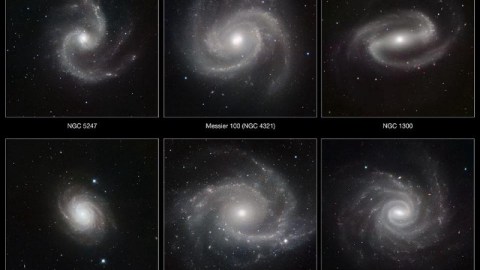
Some things are held to a higher standard than mob rule.
“The evidence at present available points strongly to the conclusion that the spirals are individual galaxies, or island universes, comparable with our own galaxy in dimension and in number of component units.” –Heber Curtis, 1920
With perhaps the most acrimonious election since the civil war behind us, it’s time to move on. While we all have opinions about how things are, should be and ought to develop, some endeavors need stronger foundations for their conclusions than popular vote. In science, for example, a single piece of evidence can sometimes be enough to overturn decades or even centuries of longstanding thinking. No matter whether people agree or disagree, whether they accept it or not, scientific truths can never be undone by the actions of humans. Sometimes, that extraordinary, incontrovertible evidence is exactly what it takes to put an end to the worst kind of science of all: science by democracy.
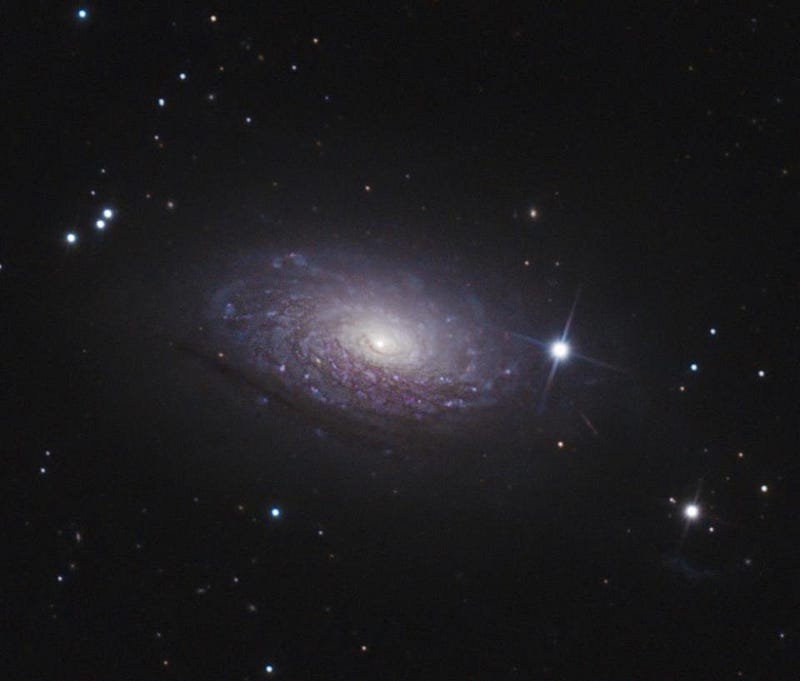
In the year 1920, there was an issue that scientists were very polarized on, and so they tried to decide it in a very unscientific way, by voting. At the same time that Einstein’s General theory of Relativity was rocking the foundations of fundamental physics, a great debate concerning the nature of a unique class of object in the night sky — the spiral nebulae — was dividing astronomers. Today, we take for granted that these are galaxies, full of stars, just like our Milky Way. But a century ago, we didn’t know that for sure. In fact, there was another theory around that was the “consensus” view at the time: that those spirals were just new stars in the process of forming: protostars.

If you had a gas cloud, chances are it would be shorter in one dimension than the other two, and under its own gravity, it would start to collapse. The shortest direction would get there first, and so you’d make a disk, and then material would funnel into the center, creating a central star. This is similar to how stellar systems actually form, so there’s merit to the idea. It just doesn’t happen to be what those “spirals” we see in the sky actually are. The other idea, of course, was that these were “island universes” (what we call galaxies today), located far outside the Milky Way. And so in 1920, two respected scientists, one on each side, were called to debate the issue in front of the National Academy of Sciences.
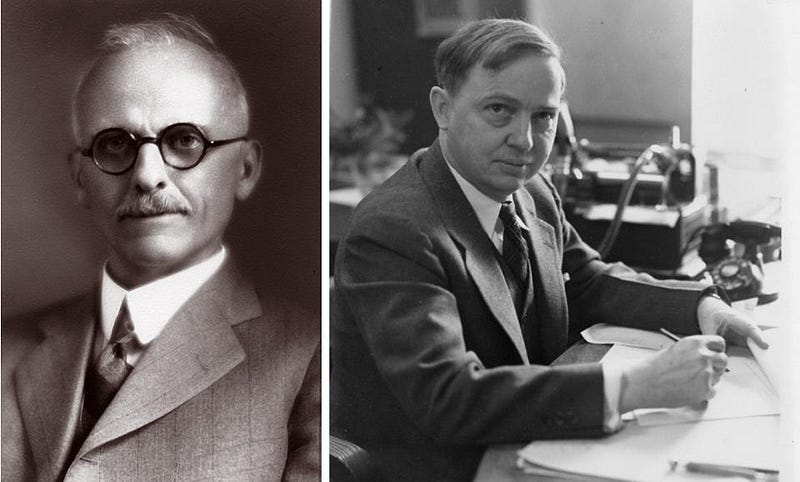
Harlow Shapley, one of the most famous astronomers of the time, was called upon to represent the protostar idea. A less well-known but well-respected and competent (and more conservative) astronomer, Heber Curtis, represented the island Universe idea. Both sides agreed on the evidence, but disagreed on how they interpreted it. In fact, some pieces would turn out to be invalid, although no one was certain at the time. The format was that each of six pieces of evidence would be presented and argued, with a panel of judges voting for the victor on each point. Here’s what they argued over.
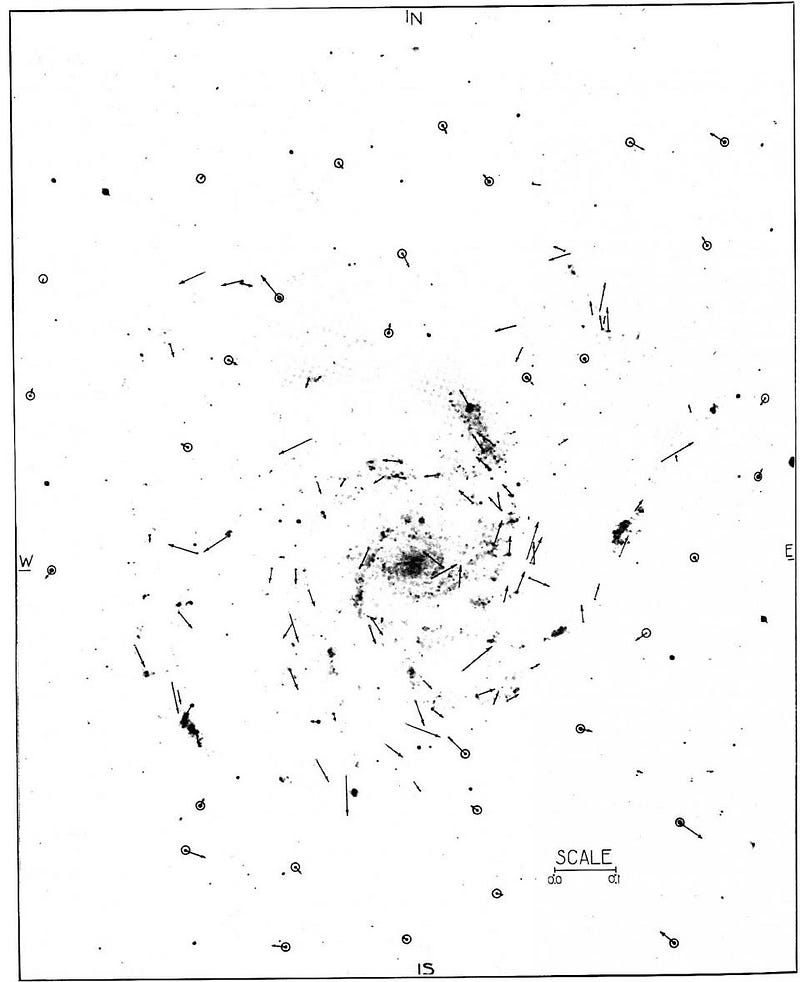
1) Observations of Messier 101 (the Pinwheel Galaxy) over the course of many years appeared to show that individual features within this nebula were rotating over time. Shapley contended that this nebula could not be a object even approaching the scale of the Milky Way, as the rotational speeds required would be many times faster than the speed of light, the ultimate speed limit of the Universe. Curtis countered that, while if those observations were correct, they would disfavor the island Universes picture, the observations were at the very limit of what the best instruments could detect, and that these effects were not observed in the other spirals. Thus, Curtis advocated that the observations themselves could not be trusted.
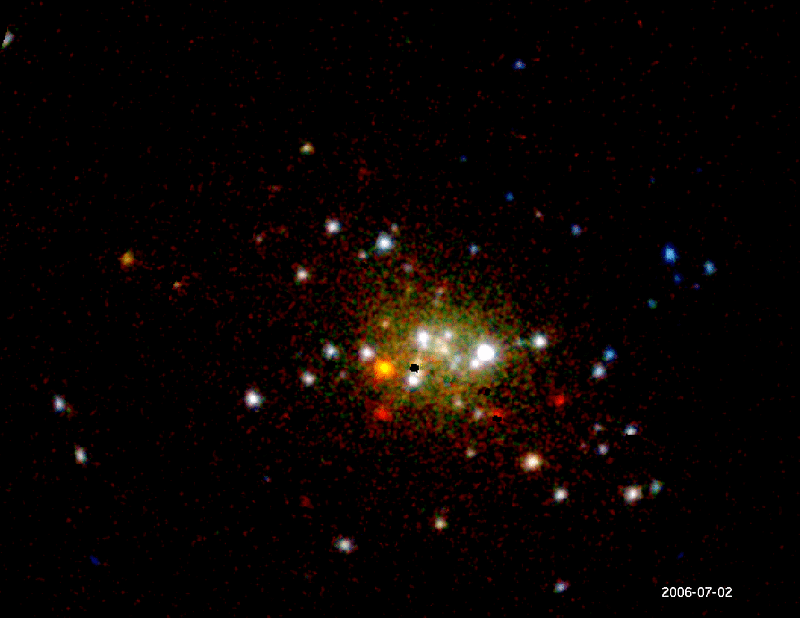
2) Observations of Messier 31 (the Andromeda Galaxy) showed that there are many objects flaring up in that small region of the sky. They were similar in brightness to the novae that we see in our own Milky Way, except they were incredibly dim, and there were more of them seen in this one region than in the rest of the Milky Way combined. Curtis estimated that this object must be millions of light years away, placing it far outside the extent of the Milky Way galaxy. Shapley, however, countered that there was a very bright flareup in 1885 that couldn’t have possibly been a nova, and therefore Curtis’ explanation must be flawed.
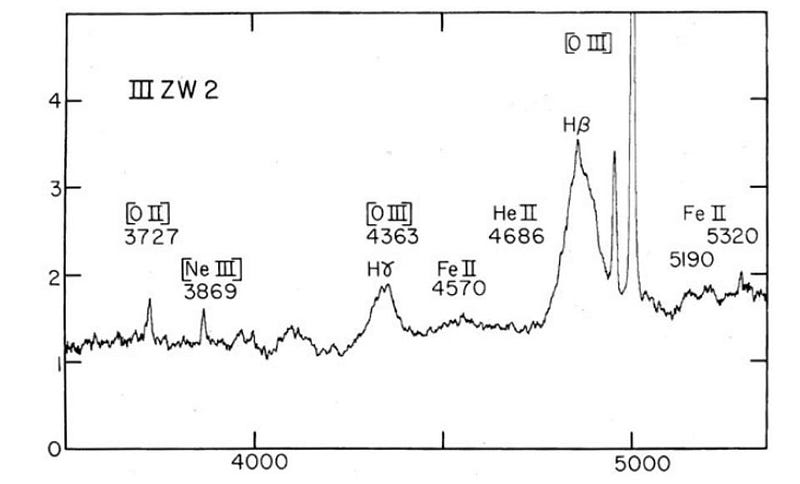
3) These spiral nebulae were also observed spectroscopically, which means the light coming from them was broken up into individual wavelengths, recorded and analyzed. The spectra coming from them did not appear to match the spectrum of any known stars, which was puzzling. Shapley contended that this was because these nebulae were not yet stars, and therefore should have their own, unique signatures. Curtis, on the other hand, argued that these spirals were, in fact, filled with stars, but that the stars that dominated these island Universes were not like the ones nearby us in the Milky Way. On the contrary, he argued, these were dominated by stars that were hotter, bluer and brighter than the average stars we can see, and were furthermore located in environment very different from the stars we saw. Therefore, it’s no surprise that their spectra would be skewed compared to what we’re used to observing.
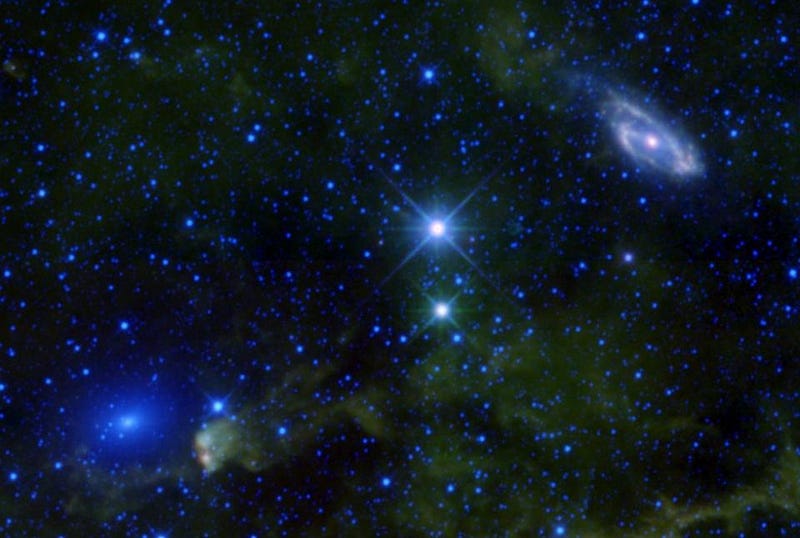
4) A very contentious observation was that there were no spiral nebulae observed in the plane of the Milky Way. This was an especially difficult observation for Shapley to contend with, because there are far more stars in the plane of the Milky Way than anywhere else in the sky. Curtis advanced the argument that these spiral nebulae are actually everywhere in the sky, but because they’re so much more distant than the objects within our galaxy, the plane of the Milky Way blocks the light from the spirals that happen to be behind it. Shapley was forced to contend that there must be something about the plane of the Milky Way that disfavors protostars from forming there. In perhaps a stroke of brilliance, he argued that the Milky Way itself was not only larger than was previously suspected, but that our Sun was located far from its center, and that there was a vast amount of light-blocking dust behind the visible stars that was preventing us from seeing these nebulae. If only infrared astronomy had been pioneered back then, perhaps they would have learned they were both correct: the lightblocking dust does obscure the spiral nebulae, which exist in abundance beyond the plane of the Milky Way!
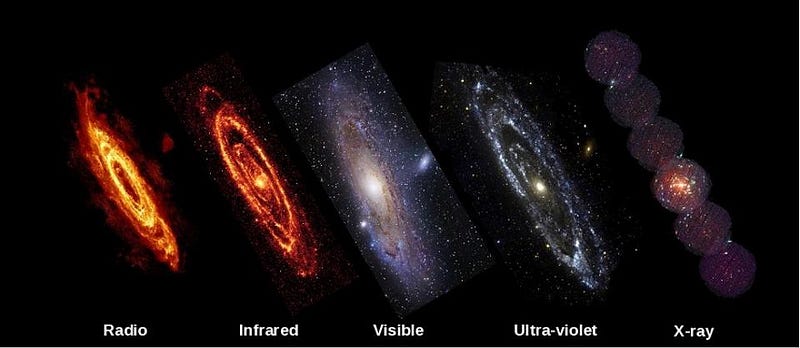
5) It was pointed out that the starlight from the known stars in our night sky, if viewed from the great distances that Curtis contended this nebulae were located, would be far too dim to account for our observations. Shapley pounced on this point, asserting that the only explanation was that these spiral nebulae were not collections of stars located at supremely great distances. Curtis was forced to resort to the same argument he used for the third point: that these spiral nebulae were filled with stars, but that the stars that dominated these distant, island Universes were not representative of the stars found nearby our location in space.
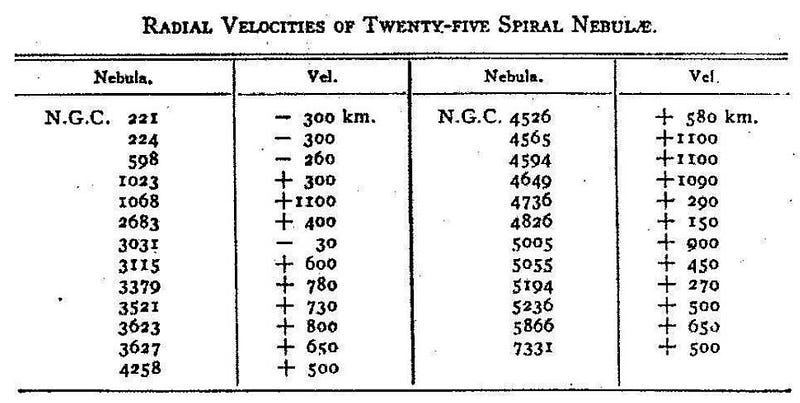
6) Finally, the last observation was that the speeds of most of these spirals had been measured. And while there were a few, such as Bode’s Nebula (Messier 81) that were moving at just a few kilometersper-second, typical of objects within the Milky Way, the vast majority of them were moving incredibly fast: many hundreds or even over a thousand kilometers-per-second. With only a few exceptions, they were moving directly away from us. Neither side had a compelling explanation to deliver at the time, the extraordinary length of the debate perhaps having taken its toll on the two participants.
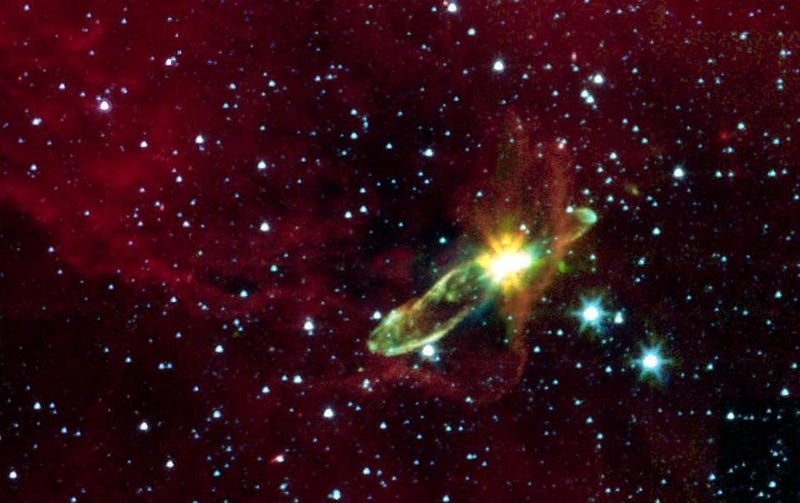
In hindsight, we know that Curtis was right about pretty much everything.
- The stars in Messier 101 (and all spirals) aren’t seen to rotate; van Maanen’s evidence was overturned.
- There were novae in other galaxies, and the “bright flareup” in 1885 was a supernova, something that was not understood in 1920.
- The stars dominating galaxies are brighter and bluer than the ones in our neighborhood, and galactic spectra align with what we believe their stellar compositions are.
- We still have difficulty viewing objects behind a galaxy’s plane, including our own. But there are galaxies there, seen in proportion to how well we’re capable of looking through the galaxy.
- The stars in our night sky are not representative of stars in the galaxy as a whole, which Curtis again was right about.
- And this last point was key to the discovery of the expanding Universe: the distant galaxies are almost all seen to move away from us, with the more distant galaxies moving away faster.
But Curtis lost the debate. The democratic nature of the debate meant that they gave Curtis just one point, Shapley four and called one point a tie. The funny thing is, the outcome of the debate didn’t matter at all. The democratic process, in science, has no merit at all. Why not? Because debate in science isn’t about achieving consensus, but rather is about raising the issues that need to be clarified to determine the answer. And in 1923, the answer was determined through evidence, courtesy of Edwin Hubble. By measuring the properties of individual stars within the closest large galaxy to us — Andromeda — we were able to determine its distance, and found that it was millions of light years away, far outside the Milky Way. The observations of a single star in this spiral nebula was enough to change our view of the Universe.
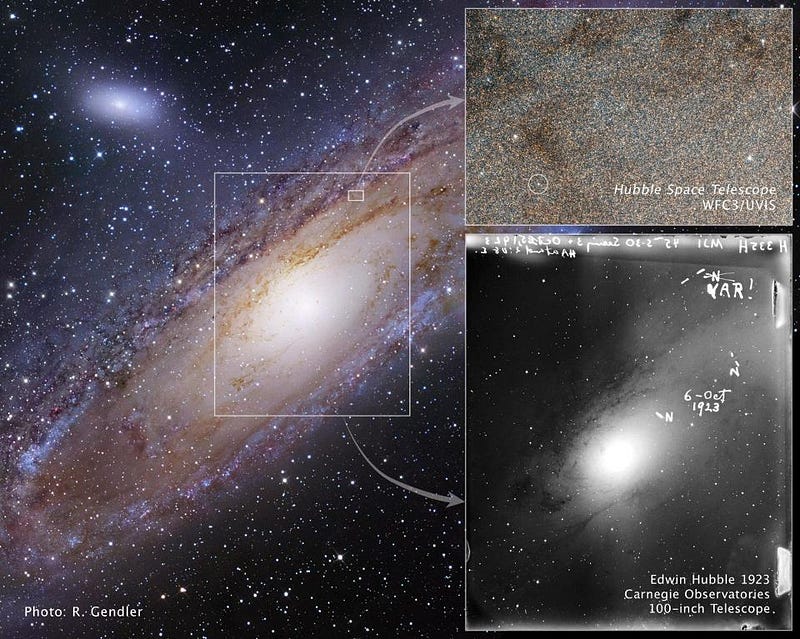
In the end, the evidence is the only thing that matters in science. When relevant evidence is available, may it be that way for all of us in every aspect of our lives.
The full story of the great debate and its resolution is told in Chapter 3 of Ethan Siegel’s first book, Beyond The Galaxy.
This post first appeared at Forbes, and is brought to you ad-free by our Patreon supporters.





